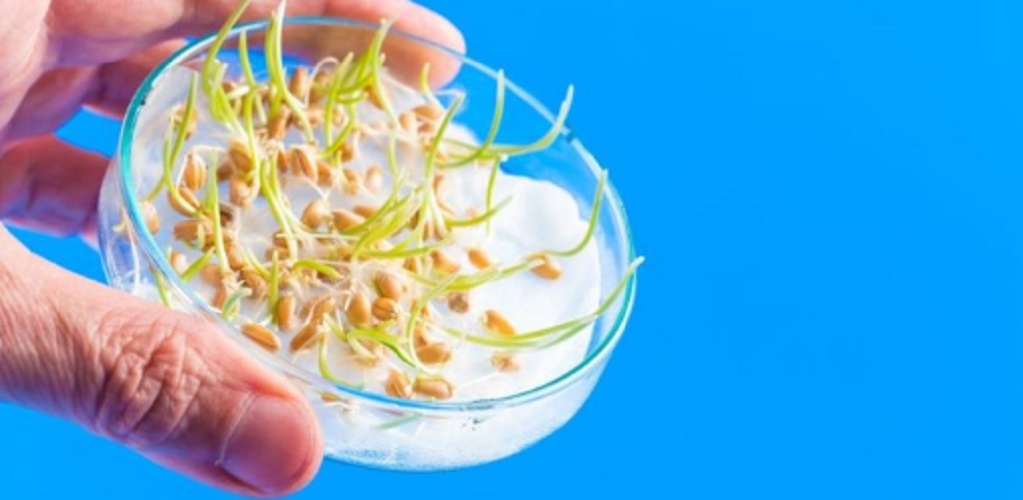What are GMOs?
We explain what are genetically modified organisms (GMOs), their advantages, disadvantages and what they are used for.
-
What are GMOs?
Genetically modified organisms (GMOs) are those microorganisms , plants or animals whose hereditary material (DNA) is manipulated by biotechnology techniques that are alien to natural methods of multiplication or combination.
Through genetic modification it is possible, for example, to alter the expression of a gene or transfer it to another organism (of the same or a different species ).
Biotechnology techniques applied to genetically modified organisms are also called “modern biotechnology”, “genetic technology”, ” DNA technology ” or “genetic engineering”. They are used, to a greater extent, in the food industry ( agriculture and livestock) and in medicine (for vaccines or to reverse hereditary diseases).
-
Advantages and disadvantages of GMOs
Among the main advantages of genetically modified organisms are:
- Greater resistance to harmful agents. Genetically modified seeds provide crops capable of withstanding diseases caused by insects or viruses , and capable of tolerating herbicides and pesticides (for example, RR soy is resistant to a very toxic herbicide, made with glyphosate).
- Improvements in composition and nutritional value . Products such as corn, rice, tomatoes, soybeans, potatoes, etc. are obtained through the inclusion of vitamins , the elimination of allergens and the modification of the protein content . With an improved composition.
- Greater tolerance to droughts and floods. Genetically modified crops are resistant to numerous environmental factors, so compared to traditional crops, they offer advantages to producers by reducing the risk of crop loss.
Among the main disadvantages of genetically modified organisms are:
- The intensive use of soils. The land is damaged, mainly due to two issues: the amount of toxic waste resulting from herbicides and pesticides (which are sprayed on genetically modified crops) and continuous planting that does not allow the earth to rest to recover its organic matter and humidity (technique called “fallow”).
- Genetic contamination The introduction of genetically modified plants can harm the environment and affect biodiversity . For example, a plant can become a pest if it grows outside the original site where its harvest was contemplated or if it transfers its modified genes to other crops (in the United States, for example, traces of a crop appeared in a traditional crop) type of corn that had only been approved for feeding farm animals ).
- Health problems. In 1992, scientists from the US government agency “Food and Drug Administration”, responsible for the regulation of food, medicines, cosmetics , among others, warned that genetically modified foods can cause unpredictable side effects and difficult to detect as allergies , toxins in the body, new diseases and nutritional problems.
- The patented seeds. Genetically modified seeds have intellectual property rights by the multinational corporations that created them. These intellectual property rights establish that farmers cannot keep these seeds for future harvests, causing producers to buy new seeds and their corresponding agrochemicals every year (with the possibility of a higher cost compared to traditional seeds).
- Adverse effects still unknown. Because the genetic manipulation in food was approved for commercialization in 1994, not enough time has elapsed to determine exactly the consequences that the different products whose genes were modified have on health and the environment.
-
Applications of genetically modified organisms

Genetically modified organisms are applied in different areas and the main ones include:
- The agro-livestock industry. By genetically manipulating seeds, crops can be optimized in favor of the consumer industry, both for feeding farm animals and for human consumption.
- Medicine . Through the manufacture of pharmaceutical supplies, access to treatments for certain diseases was facilitated. For example, people who have diabetes can apply human insulin that comes from genetically engineered human genes.
- The food industry Through genetic modifications in animals, biotechnological processes are optimized in food production. For example, through the modification of the components, greater production can be achieved in less time. Genetic modifications are also used to combat diseases in animals (resulting from mass production in feedlot or feedlot pens , name in English and commonly used).
-
Transgenic organisms
Transgenic organisms are those that have been introduced with a DNA fragment that comes from another organism , which is not sexually compatible . For example, a variety of transgenic corn contains genes from a bacterium so that its cultivation is more resistant.
Although it is very common to use both terms as synonyms, transgenic organisms are a variant of GMOs, but not all GMOs are performed using the “transgenesis” technique.
Another variant of GMO is the “cisgenesis” technique that consists in the modification of the DNA of an organism with the gene that comes from another, but sexually compatible. It is used, for example, in the reproduction of plants of different species.





